Related Research Articles

Sergey Anatolyevich Kuryokhin was a Russian composer, pianist, music director, experimental artist, film actor and writer, based in St. Petersburg, Russia. Former keyboardist for the rock band Aquarium.

Sergey Konstantinovich Zaryanko was a Russian portrait painter and art teacher of Belarusian ancestry.

Sergey Vitalyevich Bezrukov is a Soviet and Russian film and stage actor, singer, People's Artist of Russia, the laureate of the State Prize of the Russian Federation. He currently works at Tabakov Studio. He is a member of the Supreme Council of the party United Russia.

Sergei Ivanovich Osipov was a Soviet painter, graphic artist, and art teacher, who lived and worked in Leningrad, a member of the Leningrad branch of Union of Artists of Russian Federation. He regarded as one of the representatives of the Leningrad school of painting, most known for his landscape and still life paintings.

Alexander Nikolayevich Samokhvalov was a Soviet Russian painter, watercolorist, graphic artist, illustrator, art teacher and Honored Arts Worker of the RSFSR, who lived and worked in Leningrad. He was a member of the Leningrad branch of Union of Artists of Russian Federation, and was regarded as one of the founders and brightest representatives of the Leningrad school of painting, most famous for his genre and portrait painting.
The year 1985 was marked by many events that left an imprint on the history of Soviet and Russian Fine Arts.
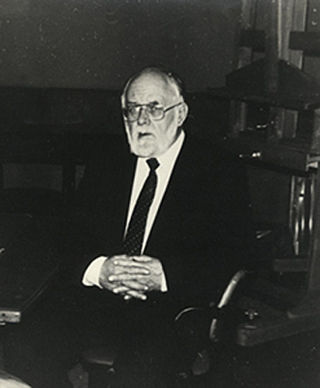
Andrei Andreevich Mylnikov was a Russian and Soviet painter and art educator, People's Artist of the Russian Federation, Stalin Prize winner, and Lenin Prize winner, who lived and worked in Saint Petersburg. He was a member of the Saint Petersburg Union of Artists, and professor of painting of the Repin Institute of Arts, regarded as one of the brightest representatives of the Soviet art, who played an important role in the formation of the Leningrad school of painting.
German Pavlovich Yegoshin was a Russian and Soviet painter and art educator, an Honored Artist of the Russian Federation, who lived and worked in Saint Petersburg. He was a member of the Leningrad Union of Soviet Artists, and was regarded as one of the representatives of the Leningrad School of Painting.
Anatoli Pavlovich Levitin was a Soviet Russian painter and art educator, People's Artist of the Russian Federation, a member of the Saint Petersburg Union of Artists, who lived and worked in Saint Petersburg and Krasnoyarsk, regarded as one of representatives of the Leningrad school of painting, most famous for his genre and portrait paintings.
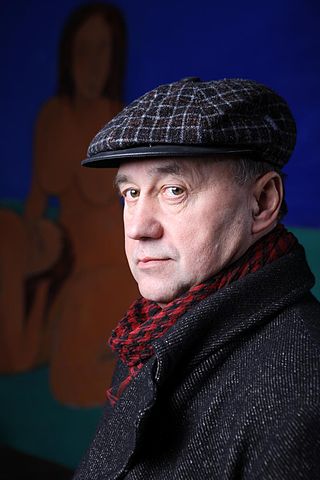
Sergey Evtuhov is a Russian painter, sculptor and author based in Vilnius, Lithuania. He has held over 30 personal exhibitions in Vilnius, Riga, Helsinki. His works are kept in private collections in the U.S., Canada, France, Russia, Lithuania and other countries.
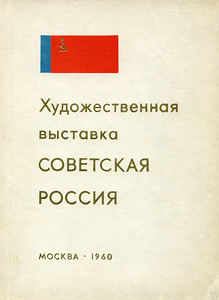
First National Art Exhibition "Soviet Russia" was one of the largest Soviet art exhibitions of the 1960s. The exhibition took place in Manezh Exhibition Hall.
The House of Creativity "Staraya Ladoga" was an all-Russian centre for artistic creativity, which existed in the Volkhovsky District of Leningrad Oblast from the mid-20th century up to the 1990s. It was located opposite the ancient village of Staraya Ladoga on the right bank of the Volkhov River.

Sergey Leonidovich Sholokhov is a Russian journalist, Candidate of Art Sciences, and winner of the national competition of the press, Golden Pen '96. Academician of the Academy Nika Award.
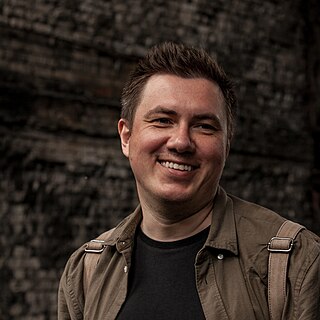
Pavel Aleksandrovich Otdelnov is an artist working in painting, drawing, video, installations, and exploring such subjects as urban space, environment, Soviet history and historical memory.

Boris Fedorovich Borzin was born in Ukraine on 29 December 1923 and died in Saint Petersburg, Russia in 1991. He was a Soviet realism painter, graphic artist, conservator, art historian, author, and a tenured professor of fine art for 30 years at the Herzen State Pedagogical University of Russia. Borzin was also a veteran of the Great Patriotic War.
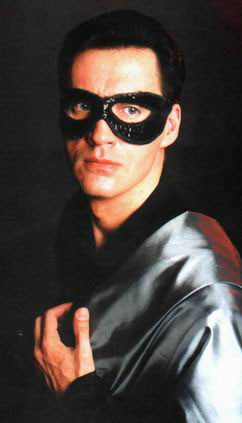
Sergey Viktorovich Alimpiev was a Soviet and Russian operetta artist, soloist of Moscow Operetta Theater in 1984, Honored Artist of Russia (1998).
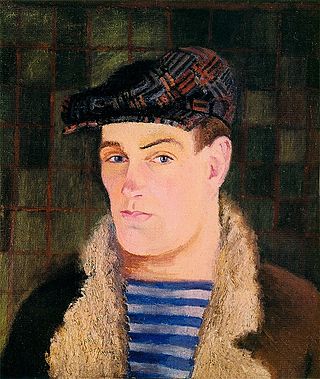
Sergey Ivanovich Markin — Moscow professional artist, painter and artist-decorator of the TRAM Theater. Master of urban landscape and narrative compositions conveying the spirit of the pre-war era. He was a member of the Pleiades of Artists of the 1920s-1930s. He worked in the Moscow Union of Artists (MOSSH). He died in battles near Moscow in the first year of the Great Patriotic War.
Georgy (Gustav) Konstantinovich Guryanov was a Soviet and Russian musician and artist.

Alexey Vladimirovich Sergienko is a Russian artist and entrepreneur.
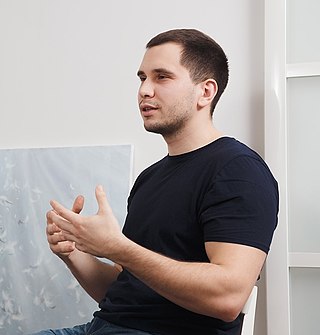
Sergey Piskunov is a Ukrainian hyperrealism painter.
References
- ↑ the world without money - Sergey Balovin , MUKHA, 2013
- ↑ In Kind Exchange project, Youtube, 2 August 2012
- ↑ Russian Artist Sergey Balovin and the In-Kind Exchange project: how he lives without money Archived 9 January 2017 at the Wayback Machine , YAHOO!, 28 March 2013
- ↑ Художник, путешествующий без денег, нарисует портреты воронежцев за свадебные подарки, Moe online, 11 June 2016
- ↑ , IN ART 2016
- ↑ Travel the world without money - Sergey Balovin, MUKHA, 2013
- ↑ Sergey Balovin's biography, IFA Gallery
- ↑ Сергей Баловин: «Все мои проекты вытекают из самой жизни и продиктованы необходимостью», VRN Times, 26 September 2011
- ↑ "Petit" project, Moscow Museum of Modern Art
- ↑ Petit Gallery
- ↑ Art Labor, exhibitions of 2010
- ↑ PETIT: Exhibition in Suitcase, ART IN ASIA
- ↑ В Шанхае откроется персональная выставка русского художника, Магазета, 27 October 2011
- ↑ Sergey Balovin the Ruslan-i ne Klubin e mengjesit, Club FM Albania, 12 April 2013
- ↑ В Шанхае художник из Воронежа раздавил свои картины бульдозером, Комсомольская правда, 2 October 2012
- ↑ Euthanasia 2, P.I.G. News, 2 September 2012
- ↑ Sergey Kuryokhin Modern Art Award
- ↑ Retrospective: artists-in-residence 2012 The Swatch Art Peace Hotel, 2012
- ↑ Sergey Balovin website
- ↑ Сметана, творог и что-то исконно псковское - пожелания от художника Сергея Баловина, который в субботу напишет портреты псковичей за еду, PLN PSKOV, 29 June 2016
- ↑ Artist (russi) di tutto il mondo, Benvenuti in Montenegro, alfabeta2, 4 December 2015
- ↑ Izložba I svadba: Neobičan project Sergeja Balovina u Kotoru, CDM, 13 August 2016
- ↑ Художник, путешествующий без денег, нарисует портреты воронежцев за свадебные подарки, Moe online, 11.06.2016
- ↑ Travel the world without money, Mukha
- ↑ Sergey Kuryokhin Modern Art Award, Sergey Kuryokhin Modern Art Award website
- ↑ Russian Club Shanghai, Натуральный обмен, 20.07.2011
- ↑ Something to present, Sergey Balovin website
- ↑ PAINTING PORTRAITS TO SUSTAIN A LIFESTYLE WITH NO MONEY, Visual News, 25.03.2013
- ↑ Virtual Museum, The Swatch Art Peace Hotel
- 1 2 Один день человека, который не пользуется деньгами, LiveJournal, 15.06.2012
- ↑ Money Free World Trip, Youtube, 02.08.2012
- ↑ Сергей Баловин, художник, автор проекта «Натуральный обмен», возглавляет топ-5 людей, «которые отказались от денег и не умерли», по версии журнала Forbes, Super Omsk, 17.01.2014
- 1 2 Izložba i svadba: Neobičan projekat Sergeja Balovina u Kotoru, CDM, 13.08.2016
- ↑ Не совсем стриптиз в не совсем хорошей квартирке, LiveJournal, 02.10.2012
- ↑ Sergey Balovin, the artist who's traveling the world without money through 'In Kind Exchange', DNA India, 29.06.2014
- ↑ Schneider Ammann beendet Mission mit Farbtupfer, Swiss Info, 13.07.2012
- ↑ Художник Сергей Баловин и его «Натуральный обмен», или Кругосветка без кошелька» , Pribal News,
- ↑ Обмен портретами. Сергей Баловин снова в Воронеже, Downtown, 02.03.2012
- ↑ Пять человек, которые отказались от денег и не умерли, Forbes, 21.08.2013
- ↑ Sergej Balovin gost sarajevske 'Čarlame', Federal Sarajevo, 28.08.2016